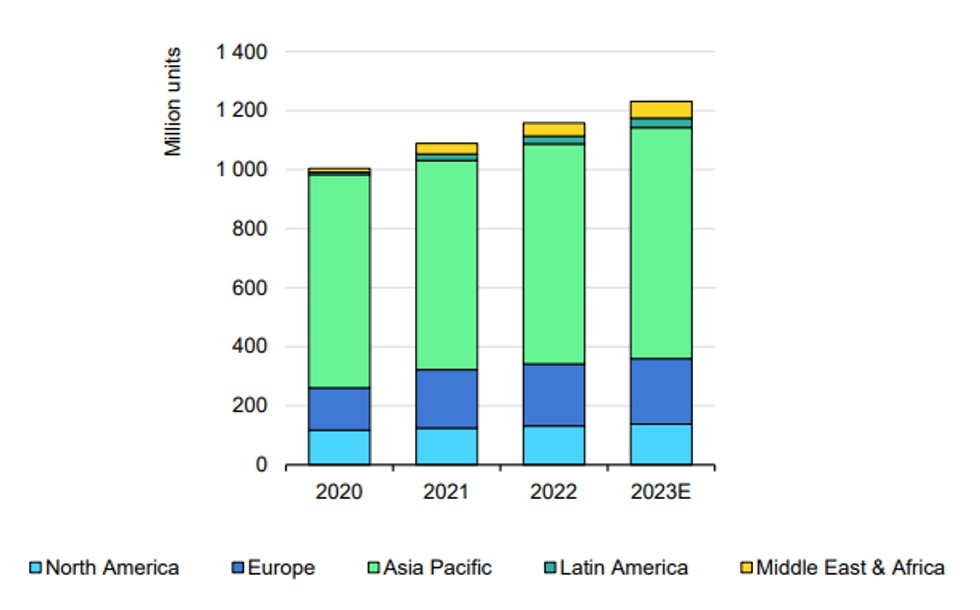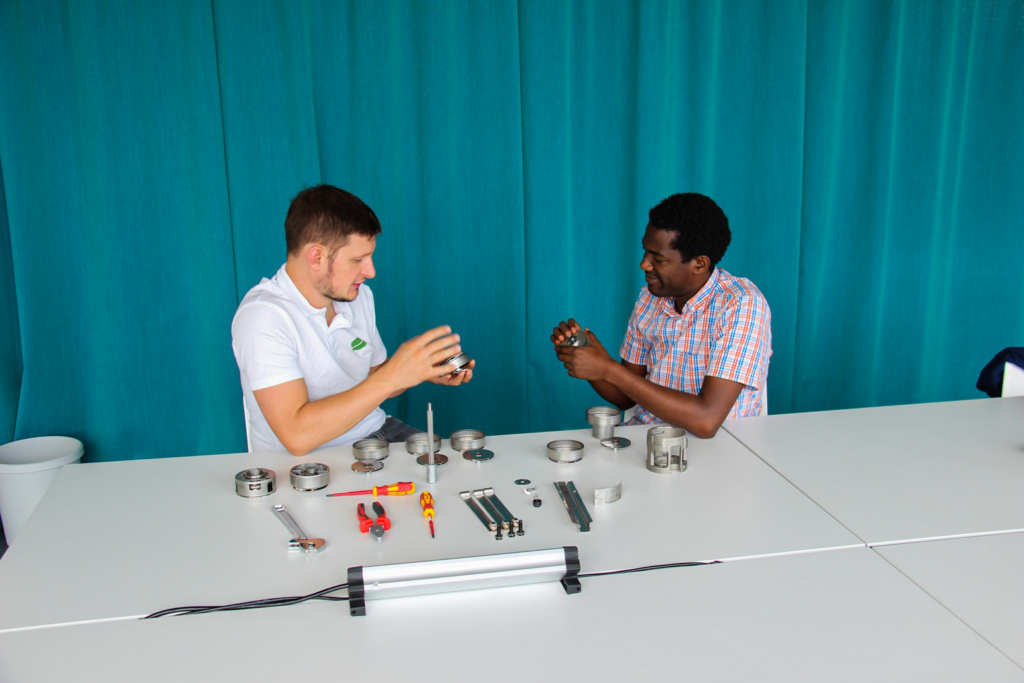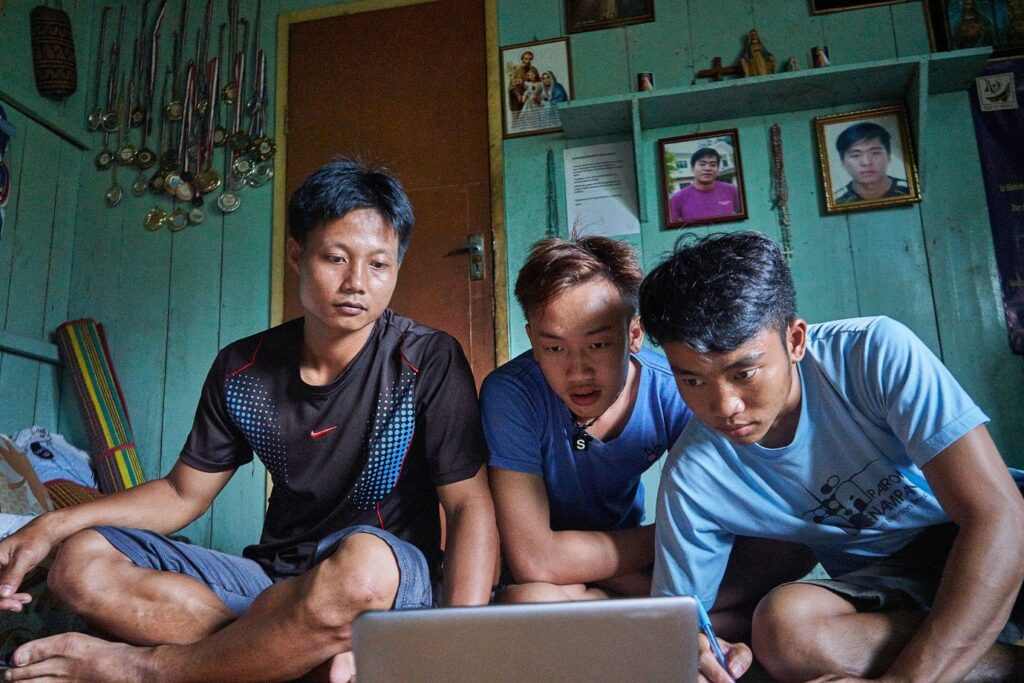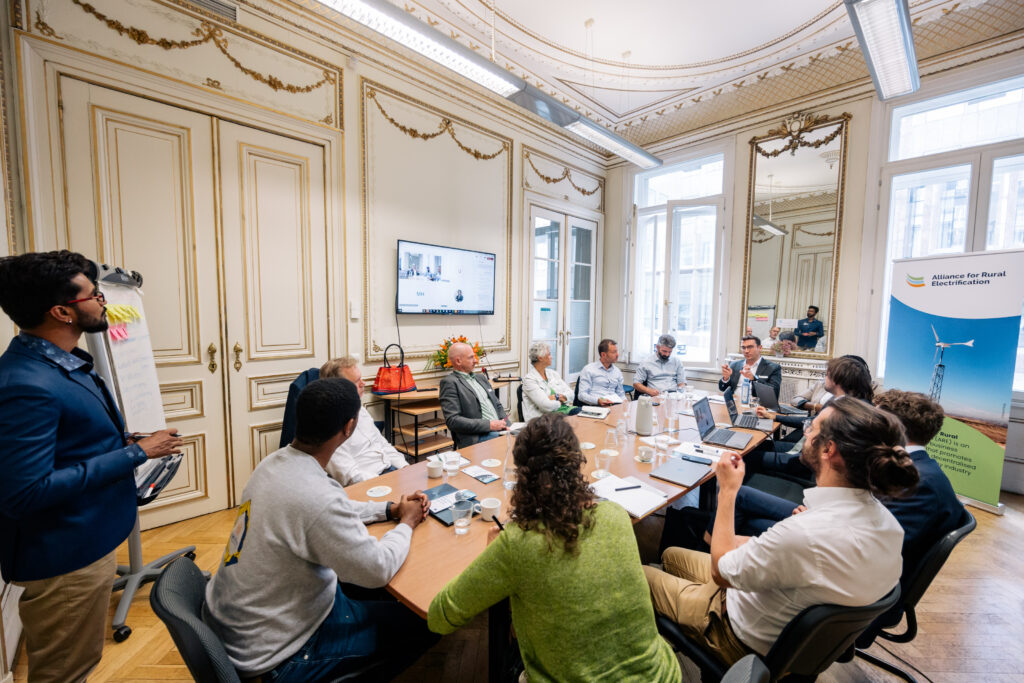Leveraging digital technologies for universal energy access
The rapid advancement of digital technologies is revolutionising the way we generate, distribute, and consume electricity. These technologies are playing an essential role in the integration of renewable energy resources, enhancing the resilience and efficiency of electricity systems. Moreover, they empower end-users to manage energy consumption more effectively, reducing both costs and environmental impact.
As the share of renewables such as solar, wind and hydro energy grows, and as the electrification of various sectors increases, digitally enabled end-use technologies, such as smart meters, pay-as-you-go (PayGo) systems, and remote monitoring, are stepping up to respond to the demand. This is exemplified across the ARE Member ecosystem, with concrete applications outlined below.
Global share of smart meters

IEA
Smart payment solutions: PayGo Systems
One of the most notable developments in digital energy solutions is the introduction of smart payment systems, particularly PayGo systems. Victron Energy, for example, has created a PayGo controller that works seamlessly with solar panels, offering consumers a prepayment option for electricity. A customer can pay for energy through mobile money transfers, receiving a code via SMS, which they then input into their home system to unlock access to electricity. This pay-as-you-go model offers a lifeline to customers who may not be able to afford the upfront costs of renewable energy equipment but can gradually pay for the service while enjoying immediate access to clean energy.
Similarly, Upya Technologies has taken digital payments a step further, providing distributors with cutting-edge solutions that enhance the customer experience. Their “request to pay” feature, integrated with a client-facing app, allows for seamless, mobile-enabled transactions. Upya’s innovation helps distributors streamline payment processes, improving customer engagement and simplifying energy access.
Another example of PayGo in action is Okra’s plug-and-play solution, which combines hardware and software to create microgrids powered by solar energy.
Remote monitoring: Real-time system management

EcoPhi
Remote monitoring systems enable service providers to track performance in real time, allowing them to respond swiftly to any operational issues that may arise. This approach enhances both the reliability and efficiency of energy systems.
For instance, enee.io offers robust monitoring tools that add significant value to the solar energy value chain. Their systems provide Measurement, Reporting, and Verification (MRV) capabilities, delivering critical data that helps optimise energy use for end-users and providing essential insights for solar businesses and institutional funders.
EcoPhi offers a similar remote monitoring solution, tailored for solar projects and water supply systems in rural African regions. Their systems provide a support system to communities where maintaining an energy and water infrastructure can be challenging and costly, ensuring that renewable energy remains reliable and accessible.
User-friendly mobile applications: Empowering consumers

COMET
Mobile apps designed for energy management are becoming an indispensable tool for consumers, allowing them to monitor their energy usage, manage payments, and interact with Distributed Renewable Energy (DRE) systems more easily. Many of these apps also feature analytics tools that provide insights into usage patterns and tips for reducing energy consumption.
Digital innovations are also improving the customer experience, especially in regions where financial inclusion is a challenge. For example, Qotto Benin has developed an internal Customer Relationship Management (CRM) tool called SiQo. This tool enables Qotto to personalise interactions with its customers, better understand their needs, and improve service quality. By enhancing the customer experience, Qotto is helping to drive the adoption of solar energy in West Africa, supporting both energy access and financial inclusion.
Similarly, Community Connect’s Community Energy Toolkit (COMET) uses interactive simulations to engage rural communities with mini-grid systems. By immersing users in a simulated energy environment, COMET helps to stimulate and manage end-user demand, ensuring that renewable energy projects are both sustainable and impactful.
A collaborative effort: ARE’s Technology & Manufacturer Circle

The Alliance for Rural Electrification (ARE) has recognised the importance of digital technologies in the DRE sector and has launched its very own Technology & Manufacturer Circle to promote collaboration among industry stakeholders. This initiative brings together manufacturers and technology providers to share insights and experiences, address challenges, and foster partnerships that advance the deployment of renewable energy technologies worldwide. All global stakeholders are invited to become an ARE Member and join this Circle.
As the world moves towards a more sustainable future, the role of digital technologies in the renewable energy sector will only grow. From PayGo systems and remote monitoring to smart grids and IoT integration, these innovations are transforming the way we produce, distribute, and consume energy. By embracing these technologies, we can create a more resilient, efficient, and equitable energy system for all.

